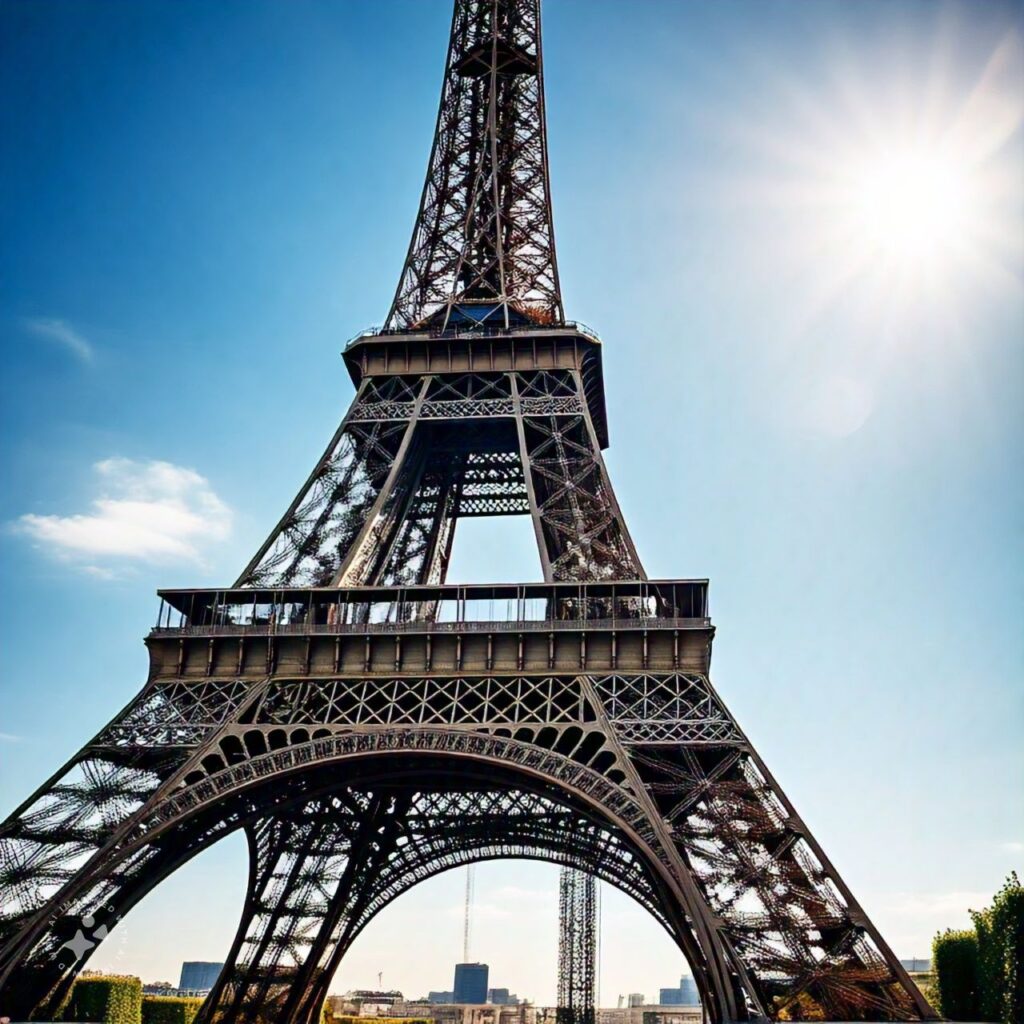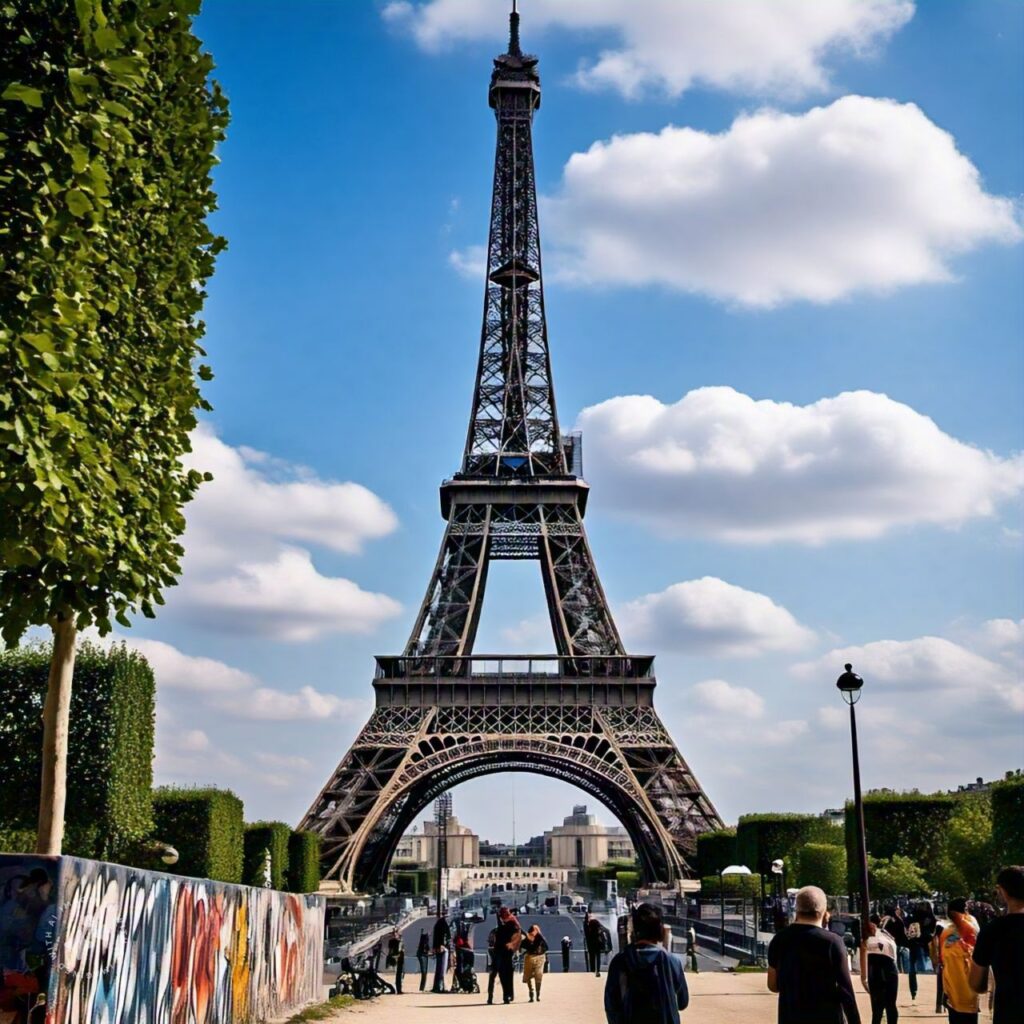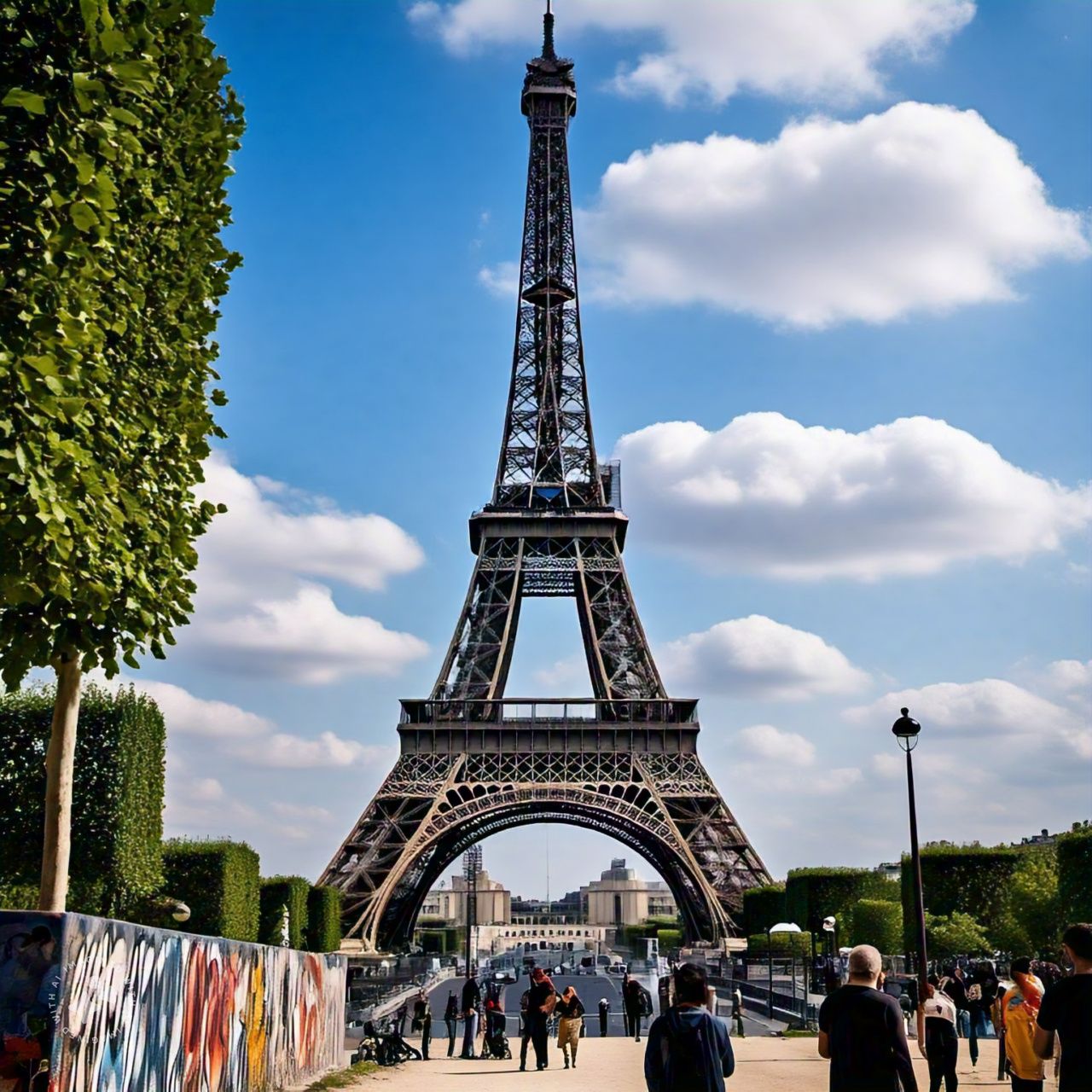The Eiffel Tower, or La Tour Eiffel, is one of the most recognizable and celebrated structures in the world. Standing proudly on the banks of the River Seine in Paris, France, it has come to symbolize not only the city of Paris but also French culture, innovation, and style. With its graceful iron latticework and towering height, the Eiffel Tower is not just an architectural marvel but a global icon that continues to captivate millions of visitors each year.
In this article, we will explore the history, design, and cultural significance of the Eiffel Tower, as well as its status as one of the most visited paid monuments in the world.
The History of the Eiffel Tower
The story of the Eiffel Tower begins in the late 19th century, during a time of great technological and artistic innovation. In 1887, the French government announced plans for the 1889 Exposition Universelle (World’s Fair) to celebrate the 100th anniversary of the French Revolution. As part of this celebration, the French authorities wanted to build a landmark that would showcase the country’s industrial prowess and modern engineering techniques.

Gustave Eiffel, a French civil engineer renowned for his expertise in metal structures, won the commission to design the tower. Eiffel’s design, initially controversial, was intended to be a temporary structure that would stand for only 20 years. It was built to serve as the centerpiece of the 1889 World’s Fair and to demonstrate France’s advancements in engineering and construction.
Construction began in January 1887 and, despite its ambitious nature, was completed in just over two years, opening to the public on March 31, 1889. The Eiffel Tower stood as the tallest man-made structure in the world at the time, surpassing the Washington Monument in the United States.
Design and Construction: A Marvel of Engineering
The design of the Eiffel Tower is a feat of engineering. Standing at 330 meters (1,083 feet) tall, the tower was initially met with criticism from many of Paris’ leading artists and intellectuals, who considered it an eyesore. Yet, Eiffel’s vision proved revolutionary, and his use of iron as the primary material set the stage for future advances in construction.
The tower is made up of more than 18,000 individual iron parts, which were pre-fabricated in a factory and assembled on-site. Eiffel used a technique called wrought iron latticework, which allowed the structure to be both strong and lightweight. The tower’s unique design maximized the use of space while minimizing weight, allowing it to reach unprecedented heights without collapsing under its own weight.
What is even more remarkable is the fact that the Eiffel Tower was assembled without the use of modern cranes or machinery. The construction team, which consisted of more than 300 workers, relied on simple tools, pulleys, and scaffolding to put the structure together. The tower was completed with minimal casualties, a testament to the careful planning and precision involved in the project.
Eiffel’s design was also mindful of wind resistance. The open lattice structure of the tower allowed wind to pass through, reducing the impact of strong gusts on the integrity of the building. Today, the Eiffel Tower is considered a masterpiece of structural engineering and a testament to human ingenuity.

Cultural and Symbolic Significance
Initially, the Eiffel Tower was intended to be a temporary structure, meant to stand for only 20 years. However, its popularity soon grew, and it was repurposed as a radio tower, playing a crucial role in the development of wireless telecommunication. Over time, the tower became an enduring symbol of Paris and France.
The Eiffel Tower is often seen as a symbol of romance, elegance, and modernity. It has been the backdrop of countless films, photographs, and artworks, and it is frequently associated with the allure of Paris, the “City of Lights.” The tower’s towering presence, combined with its delicate, intricate design, has made it a beloved landmark for visitors and locals alike.
Over the years, the Eiffel Tower has become a central feature of many cultural and national celebrations. It has hosted fireworks displays, cultural performances, and international events. On Bastille Day, France’s national holiday, the tower is often illuminated in dazzling lights to mark the occasion, drawing millions of spectators to the Champ de Mars and surrounding areas.
In addition to its cultural symbolism, the Eiffel Tower has also become a symbol of technological and scientific progress. As a pioneering example of modern engineering, it stands as a reminder of the possibilities that can be achieved through human innovation.
The Eiffel Tower: A Global Icon
The Eiffel Tower is more than just a monument; it is a global icon recognized around the world. Its distinctive silhouette, with its sweeping curves and sharp angles, is instantly identifiable, making it one of the most photographed structures on the planet. Whether seen in movies, on postcards, or as part of the Paris skyline, the Eiffel Tower has become synonymous with the charm and elegance of France.
Millions of people from around the world visit the Eiffel Tower each year, making it one of the most popular tourist attractions globally. Visitors come to admire the breathtaking views from the observation decks, enjoy a meal at one of the tower’s restaurants, or simply marvel at its impressive design. The tower is especially popular in the evening when it is lit up with golden lights, creating a magical atmosphere over Paris.

The Eiffel Tower’s Visitor Experience
The Eiffel Tower offers a variety of experiences for visitors, making it one of the most sought-after destinations in Paris.
- The View from the Top: One of the most rewarding experiences for visitors is taking the elevator or, for the adventurous, the stairs, to the summit of the tower. From here, visitors can enjoy 360-degree panoramic views of Paris, including the Seine River, the Arc de Triomphe, and the Louvre Museum. On clear days, the view stretches as far as Montmartre and the distant suburbs of Paris.
- The Second Floor: At 115 meters (377 feet) above ground, the second floor offers another fantastic view of the city, along with exhibits about the tower’s history and construction. There is also a restaurant, 58 Tour Eiffel, where guests can enjoy a meal while taking in the stunning scenery.
- The First Floor: The first floor is home to an interactive museum and an observation deck, which includes a glass floor that allows visitors to look straight down at the ground below. It’s a thrilling experience, especially for those with a fear of heights!
- Illumination and Nighttime Beauty: At night, the Eiffel Tower is illuminated in a dazzling display of lights, and every hour, the tower sparkles for five minutes, delighting tourists and locals alike. This nightly light show adds to the magic of the landmark, making it a must-see attraction, especially after dark.
The Eiffel Tower: A Legacy of Innovation
The Eiffel Tower’s legacy extends beyond its architectural and cultural significance. Over the years, it has served as a testing ground for new technology and innovations, particularly in the fields of communication and broadcasting. The tower’s use as a radio tower was crucial to the development of wireless communication, and it remains a vital telecommunications hub even today.
In addition, the tower continues to inspire architects and engineers worldwide, showcasing the potential of steel and metal in large-scale construction. Its influence is evident in modern skyscrapers, bridges, and other structures around the world.
Conclusion: A Timeless Symbol of Paris
The Eiffel Tower is not just a landmark; it is a symbol of Parisian elegance, French ingenuity, and human achievement. From its controversial beginnings as a temporary structure to its status today as one of the most recognized and visited monuments in the world, the Eiffel Tower has become an integral part of Paris’s identity and global cultural heritage.
Whether you visit it to take in the views, appreciate its stunning design, or simply to experience the magic of Paris, the Eiffel Tower remains a timeless symbol of romance, innovation, and the enduring beauty of the City of Lights. It is a wonder that continues to captivate hearts and minds, standing tall as a beacon of inspiration and pride for both the people of Paris and the world.
